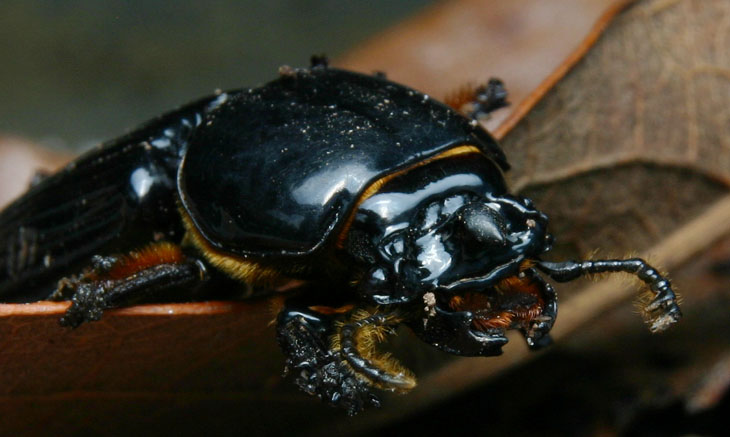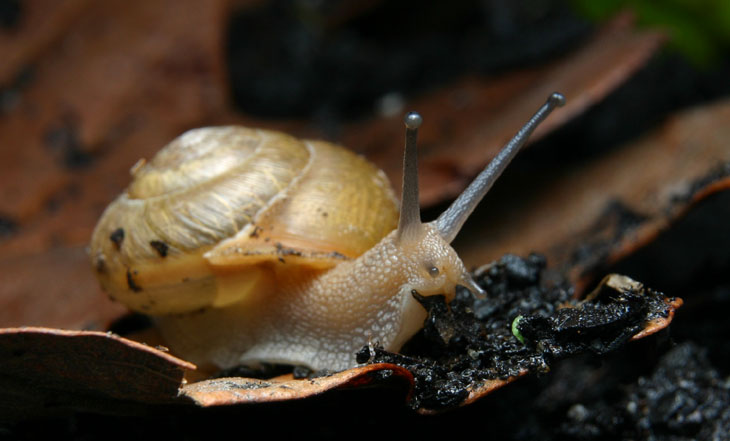
I’ll let you in on a little secret. No, it’s not that I can’t photograph cute animals – that’s pretty damn obvious. This has to do with book reviews. You see, I spend more time on the illustrating image of the book cover than I do on the review itself, largely because I get a concept in my head and try to produce that image, which may or may not work.
In the case of my most recent review (which is the previous post,) naturally the image had to involve bugs. My first attempts showed that a scale problem was evident, but I also missed a rare opportunity. While I was unprepared with the camera, an unidentified pollinator hovered over the book for a moment while it sat on the lawn, attracted by the bright yellow color. This would have been a fantastic convergence not just of an insect for the cover, but a demonstration of the simple instructions for finding food within a bug’s brain, based on certain colors – what a great illustration for the book! But it was gone before I could bring the camera to bear, and I waited (twice!) out in the yard for a long time to catch a repeat performance, in vain.
So I needed a more cooperative insect. But getting anything that would show up against the size of a hardcover book and still be recognizable, especially in the size constraints of the post formatting, required a big bug. I had in mind an Eyed Click Beetle, but they’re usually not found until much later in the season; nevertheless, I took a short excursion to the local riverside forest to see what I could find under bark and rotten logs. Pretty quickly, I found a collection of Patent-leather Beetles (Odontotaenius disjunctus,) which are typically 35mm long or so, probably the best I was going to do. Aside from their size, the most distinctive thing about them is the noise that they make when disturbed, by rubbing their wings against their abdomen. I managed to record this and amplify it a bit, so you get to listen to the sound while looking at this breathtaking portrait below of one of my photo subjects.

While on this quest, I also found the salamander at top, which I believe is in the appealingly-named Slimy Salamander complex (Plethodon glutinosus.) This would have to count as the cutest thing I found this trip, and believe me, I’m sparing you the photos of the Patent-leather grubs I found along with the adult beetles. My salamander model up there is about 25mm long, and much more cooperative than the beetles were, willing to hold reasonably still for a few shots with the softbox for lighting.
And I found a larger specimen of a local land snail, though determining the species has proven quite difficult – the best I can say is it appears to be from the family Polgyridae, though this is little more than a guess. In my efforts to capture my large friend here, I had to nudge the body near the foot to get it to relinquish its grip on the branch; immediately afterward, my finger started burning slightly but distinctly, as if I’d had contact with weak battery acid. It took two tries wiping it off before this ceased, and I’m quite sure this was not my imagination. So far, I have not determined that any species nearby is capable of exuding a strong irritant (some aquatic species actually use sulfuric acid as a defense, but they’re definitely a distant relation to my capture, being sea slugs and nudibranchs,) but I’m still looking. Naturally, this made my handling for this photo session a little more circumspect. I mean, when someone is asked, “How’d you get those scars?” who wants to confess that they got on the wrong side of a snail?

But we’re not out of the woods yet – in fact, my next subject was found very soon after arrival, just off of the path that a trio of fisherfolk had only moments before traipsed down without noticing. Northern Watersnakes (Nerodia sipedon sipedon) are curiously massive reptiles, typically about a meter long but very thick-bodied, with larger heads than most species found in the area. My friend here was remarkably docile, holding the exact same pose while I not only moved to several vantage points, but switched to the strobe for lighting as well.

They’re fairly common around streams and ponds in the area, usually seen basking to raise their body temperature since most rivers are fairly brisk this time of year. They’re nonvenomous and can’t hurt anyone, though they’re distinctly defensive for snakes, very quick to bite – this is in contrast to at least half the species in the area, including the Black Rat Snakes that can get over two meters in length, which usually just struggle and poop. Northern Watersnake’s teeth are quite small and the worst anyone will get is a series of blood spots.
 Yet, people are notoriously bad about knowing or remembering anything about their local snakes, so most water snake species get killed in the belief that they are either Cottonmouth Water Moccasins (which are not found in central North Carolina) or Copperheads (which are, but are much rarer than water snakes and significantly different in appearance.) I have some basic advice: if you can’t tell the difference and can’t leave them the fuck alone, stop going into areas where wild animals live. Stay indoors, watch TV, whatever. The only situations where anyone is bitten by a venomous snake is where the snake was provoked – snakes can’t eat people and don’t know what hate is; they simply want to be left in peace. This takes far less effort and risk than trying to kill them.
Yet, people are notoriously bad about knowing or remembering anything about their local snakes, so most water snake species get killed in the belief that they are either Cottonmouth Water Moccasins (which are not found in central North Carolina) or Copperheads (which are, but are much rarer than water snakes and significantly different in appearance.) I have some basic advice: if you can’t tell the difference and can’t leave them the fuck alone, stop going into areas where wild animals live. Stay indoors, watch TV, whatever. The only situations where anyone is bitten by a venomous snake is where the snake was provoked – snakes can’t eat people and don’t know what hate is; they simply want to be left in peace. This takes far less effort and risk than trying to kill them.
My subject here finally reached the limit of its patience when I tried placing my sandaled foot alongside for a scale photo – it took a quick shot at my foot, pretty half-heartedly I must admit, then simply slid off purposefully but still not quickly and ducked into the water. Yes, this means the encounter with the snail provided more actual harm to me. Despite appearances in this image, I’ve looked closely at the originals and those reddish marks along the jaw are almost certainly natural coloring, and not blood from a recent meal (it’s rare that snakes even draw blood from their prey, since they swallow their meals whole.) Also, quite some time back I featured an image ostensibly of an Eastern Cottonmouth Water Moccasin, but that I’m now fairly certain was simply another example of my friend here. I’ve never seen a Cottonmouth in the wild, and in my defense that was the identification that the zoo provided on the enclosure, but the markings on the face are not consistent – I think they simply had both species in the enclosure and one not marked. Yeah, two and a half years for a correction – that’s still better than the catholic church…
Finally, Sunday morning The Girlfriend and I sat out on the porch and watched our resident Five-lined skink (genus Plestiodon) venturing out on the steps. That afternoon, The Girlfriend came in and remarked about how bold the skink was getting – she had perched on the brick edge at shelf height right alongside the door, and hadn’t budged when TG had passed. I fetched the camera and, sure enough, the skink stayed in place for several frames at a very close range, even allowing me to remove the thermometer transmitter that serves as the backdrop in this image. I have never seen a skink this complacent about close approaches, and have no idea why it occurred. I also suspect it’s a different one than we’d been seeing, since that previous (linked) shot had to be obtained with a focal length of 320mm, and she disappeared every time I made any distinct movement. But hey, I’ll take the opportunity to get those nice detailed closeups any time I’m offered.





















































